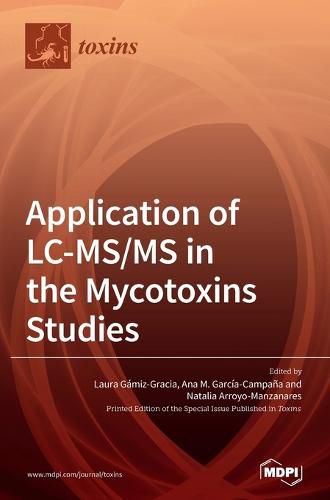Readings Newsletter
Become a Readings Member to make your shopping experience even easier.
Sign in or sign up for free!
You’re not far away from qualifying for FREE standard shipping within Australia
You’ve qualified for FREE standard shipping within Australia
The cart is loading…






This title is printed to order. This book may have been self-published. If so, we cannot guarantee the quality of the content. In the main most books will have gone through the editing process however some may not. We therefore suggest that you be aware of this before ordering this book. If in doubt check either the author or publisher’s details as we are unable to accept any returns unless they are faulty. Please contact us if you have any questions.
Mycotoxins are secondary metabolites produced by the fungi of different species (mainly Aspergillus, Fusarium, and Penicillium), with toxic effects for humans and animals. These mycotoxins can contaminate food and feed. The European Union (EU) has established the maximum permitted or recommended levels for well-known mycotoxins in different foodstuffs. However, there are other mycotoxins that are not included in the regulations: the emerging mycotoxins (whose toxicity is still not clear), and the modified or masked mycotoxins (produced as a consequence of a detoxification strategy of the host plant of the fungus or during food processing). These mycotoxins could pose a risk and should also be taken into account. In order to assure consumers’ health, analytical methods for the accurate determination of mycotoxins in different food matrices and feeds are required. In this sense, liquid chromatography tandem mass spectrometry (LC-MS/MS) is a powerful tool for their unique identification and quantification. Moreover, the use of high-resolution mass spectrometry (HRMS) allows one to identify novel mycotoxins and targeted/untargeted approaches for study. This Special Issue compiles recent applications of LC-MS/MS in mycotoxin studies, as well as the development and validation of new analytical methods for their identification and quantification in different food matrices and feed, occurrence studies, and the biomonitoring of mycotoxins and their metabolites in biological fluids.
$9.00 standard shipping within Australia
FREE standard shipping within Australia for orders over $100.00
Express & International shipping calculated at checkout
This title is printed to order. This book may have been self-published. If so, we cannot guarantee the quality of the content. In the main most books will have gone through the editing process however some may not. We therefore suggest that you be aware of this before ordering this book. If in doubt check either the author or publisher’s details as we are unable to accept any returns unless they are faulty. Please contact us if you have any questions.
Mycotoxins are secondary metabolites produced by the fungi of different species (mainly Aspergillus, Fusarium, and Penicillium), with toxic effects for humans and animals. These mycotoxins can contaminate food and feed. The European Union (EU) has established the maximum permitted or recommended levels for well-known mycotoxins in different foodstuffs. However, there are other mycotoxins that are not included in the regulations: the emerging mycotoxins (whose toxicity is still not clear), and the modified or masked mycotoxins (produced as a consequence of a detoxification strategy of the host plant of the fungus or during food processing). These mycotoxins could pose a risk and should also be taken into account. In order to assure consumers’ health, analytical methods for the accurate determination of mycotoxins in different food matrices and feeds are required. In this sense, liquid chromatography tandem mass spectrometry (LC-MS/MS) is a powerful tool for their unique identification and quantification. Moreover, the use of high-resolution mass spectrometry (HRMS) allows one to identify novel mycotoxins and targeted/untargeted approaches for study. This Special Issue compiles recent applications of LC-MS/MS in mycotoxin studies, as well as the development and validation of new analytical methods for their identification and quantification in different food matrices and feed, occurrence studies, and the biomonitoring of mycotoxins and their metabolites in biological fluids.